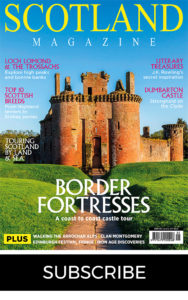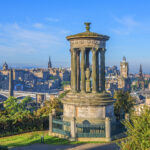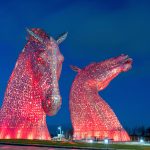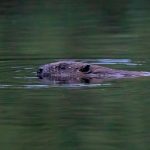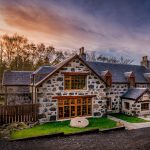MORE FROM SCOTLAND MAGAZINE
The East Highlands
Though the West Highlands’ charms are well reported, the attractions of the East Highlands have often been unfairly overlooked, as our writer discovers on her car-free visit
Words by Rachel Mills
The exposed mountain scenery of Scotland’s west coast has been exported all over the world as the archetypal Highlands landscape.
Visitors flock to the West Highlands’ shortbread-tin destinations of Glen Coe and the Isle of Skye, where much of the hill country is rugged and weather-beaten, glorious to look at, but inaccessible to all but the fittest hill climbers.
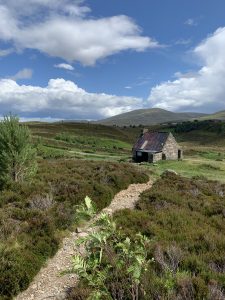
Over in the East Highlands, the land is a little more gentle, more rhythmic and rural, but no less stunning. Here, where the lofty Cairngorms mountain range has five of the UK’s six highest mountains and a quarter of Scotland’s native forest, it’s every bit as wonderful as the west, yet it sees just a fraction of the visitors.
Scotland’s East Highlands were made for slowing down: beautiful ever-changing mountain views snatched from train and bus windows, laid-back strolls along river-valley paths or in forests that curl around blue-green lochs, and whisky tasting in some of Scotland’s oldest distilleries.
In the East Highlands, you can immerse yourself in the landscapes that inspired Scottish myths and legends, seek out remote beaches and royal connections, and take time to truly understand the cause of the Jacobites, and appreciate today’s Gaelic revival.
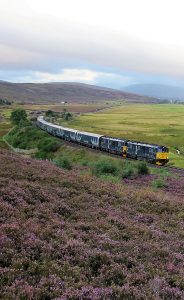
For those travelling to Scotland after London, there’s no need to fly, in fact, the overland journey is a huge part of the adventure. I travelled from London via Edinburgh to Pitlochry, Inverness, and Grantown-upon-Spey, and will always treasure the memory of the Cairngorms’ moorland outline traced onto the window of the Caledonian Sleeper on my return journey.
PERTHSHIRE’S APPEAL
From London’s grand King’s Cross station (of course, I pay my respects to Harry Potter’s Platform 9 . before departing), the first stop in my East Highlands itinerary is Pitlochry, Perthshire’s gateway to the Highlands. There are two routes from Edinburgh, and I choose the easterly option, via Kirkcaldy in Fife, mostly because this route crosses over the iconic Forth Bridge (sit on the right-hand side of the train, if you can, for the best views).
Lovely-sounding station names like Aberdour and Kinghorn roll by, with neat, handsome houses and smart chimney stacks, backdropped by white sandy bays and a striking jewel-blue sea. Beyond Perth, the landscape becomes more rural, and from Pitlochry’s Victorian train station, I spot green hills peeking at me.
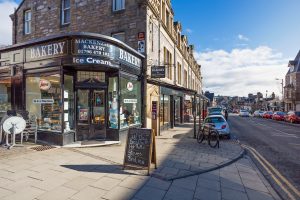
Pitlochry was made famous in 1842 when Queen Victoria came to visit and was lavish in her praise of this pretty Perthshire town. From that point, it fast developed into a popular tourist resort and today it’s good-looking, if a little twee with its abundance of tea rooms and tartan shops, but a great spot for visitors wishing to ease themselves into the Highlands, nonetheless. If the ‘theatre in the hills’, the Pitlochry Festival Theatre, has a production on, be sure to snap up a ticket.
INVERNESS, BEAULY AND THE BLACK ISLE
Inverness, the capital of the Highlands, is the perfect city to access all the East Highlands has to offer. Though I’m underwhelmed by the streets surrounding the central train and bus stations, when I step onto Ness Bridge, all is forgiven. The setting sun silhouettes the rolling hills and riverside buildings, while the gentle River Ness slides beneath its historic bridges.
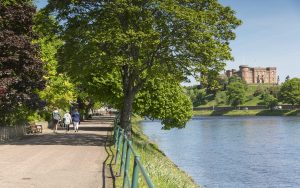
I spend the next few days exploring nearby Loch Ness, Beauly, the Black Isle and Moray Speyside (better known as whisky country), and my evenings are spent strolling the riverside Ness Islands walk, before ducking into pubs like MacGregor’s bar for a warm welcome and traditional music. I take a train to the pretty village of Beauly – the epicentre of Clan Fraser of Lovat – where only one door opens on its tiny station platform, and I walk to coaching inn The Downright Gabbler to join a guided stroll packed with stories of Highlands history.
I take a local Stagecoach bus across to the Black Isle, which takes its name from the rich peaty land, and feel like the only person on the dappled trail through the woods to Fairy Glen falls (with enough time, you can make it to the nose of the nearby narrow peninsula at Chanonry Point to spot the resident bottlenose dolphins). And finally, I hop on the Inverness–Aberdeen train line to the former royal burgh of Forres, to seek out Sueno’s Stone (an ancient Pictish sculpture), Nelson’s Tower with its commanding viewpoint, and Benromach Distillery – Speyside’s smallest working distillery and one where everything’s still done by hand.
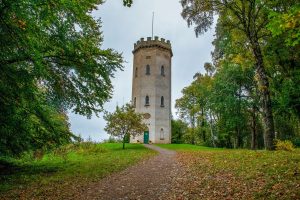
CULLODEN’S HISTORY
The site of the last stand of the Jacobites, the Culloden Battlefield is easily accessible from Inverness. There’s a reverential hush across the wide open and wild site, which – slick visitor centre aside – looks much as it would have in 1746. Red (English Loyalist) and blue (Jacobite) flags mark the lines of where men and boys made their final stand: the two sides jostling for position before the Jacobites are said to have fired the first cannon.
Today, wind whips across the moor and ground nesting birds reel and cry, rising from the long grass. Stone markers, added long after the battle and carved with the names of the fallen clans and their chiefs, are a sobering reminder that the huge majority of the fallen were Scots, supporting Bonnie Prince Charlie’s doomed claim to the British throne.
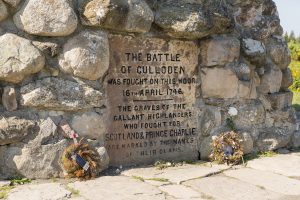
The visitor centre’s tours are illuminating and heart-breaking: injured Scots were lined up and shot. It was this battle that marked the beginning of the end of Highlands culture. The Gaelic language had already been banned, and following the defeat of the Jacobites, Highland dress, weapons and gathering in groups were also outlawed.
GRANTOWN-ON-SPEY AND THE CAIRNGORMS
One of Scotland’s first planned towns, Georgian Grantown grew up in the decades following the final Jacobite stand. The land was (and is) home to Clan Grant, and in 1765, local Laird Sir James Grant wanted to keep up with the age of Scottish Enlightenment by developing local industry and manufacture. Renamed Grantown-on-Spey in 1898 – despite the River Spey being a kilometre away beyond community-owned Anagach Woods – today the town’s neat streets make a peaceful base from which to explore the Cairngorms National Park.
This is an extract. Read the full version in our January/Feburary 2024 issue. Available to buy from Friday 15 December here.
Read more:
Scotland Magazine’s 12 Days of Christmas Advent Calendar Prize Giveaway

SCOTLAND MAGAZINE
Published six times a year, every issue of Scotland showcases its stunning landscapes and natural beauty, and delves deep into Scottish history. From mysterious clans and famous Scots (both past and present), to the hidden histories of the country’s greatest castles and houses, Scotland‘s pages brim with the soul and secrets of the country.
Scotland magazine captures the spirit of this wild and wonderful nation, explores its history and heritage and recommends great places to visit, so you feel at home here, wherever you are in the world.
